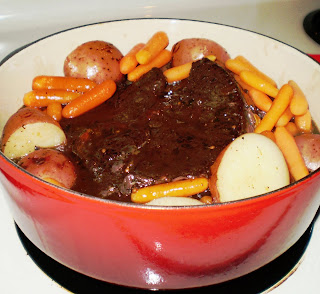Rolling in Dough
 We're still flush with apples and that means I'm rolling in dough -- or rather rolling the dough.
We're still flush with apples and that means I'm rolling in dough -- or rather rolling the dough.It's no secret that I don't often bake whole pies -- except for family holiday dinners or when company's coming. And whether I bake a traditional all-American apple pie, a blueberry beauty or late harvest peach-raspberry melba, I like to use my own original yogurt crust recipe. This recipe works well for one crust pies like lemon meringue and pumpkin, too. Try it with vanilla yogurt instead of lemon for a baked shell worthy of your best cooked chocolate pudding topped with whipped cream after chilling. For savory recipes like quiche or even French meat pies (Stay tuned, my grandmere's tourtiere recipe will grace these pages before you know it!) eliminate the sugar and substitute plain yogurt for the flavored kind.
For a fancy finish, pick up a set of decorative pie crust cutters from your favorite kitchen boutique. My fall leaves came from Williams-Sonoma last year. I love them!
For a fancy finish, pick up a set of decorative pie crust cutters from your favorite kitchen boutique. My fall leaves came from Williams-Sonoma last year. I love them!
YOGURT PIE CRUST
1 1/2 cup all-purpose flour (plus 2 tablespoons for rolling)
1 cup oat flour (or simply increase the all-purpose amount by one cup)
1 tablespoon white sugar
dash of salt
2/3 cup vegetable shortening
1 cup lemon yogurt
dash of salt
2/3 cup vegetable shortening
1 cup lemon yogurt
Make the pastry dough by combining flours, sugar and salt in a processor; pulse 2-3 times. Add shortening and pulse 4-5 times, or until mixture holds together in the shape of small peas. With the processor running, slowly add the yogurt through the chute, processing until the dough forms a ball. You may or may not use all the yogurt, the tricky part of making a flaky crust is no less tricky when moistening the dough with yogurt instead of water. Remove the dough ball and adhere any remaining pieces of dough to it, split dough into two balls, drop each in a ziploc bag and refrigerate for at least one hour or up to three days.
To use dough remove dough balls from the refrigerator. Let sit at room temperature for 5-10 minutes in order to soften just enough to make rolling out a bit easier. Roll out with a rolling pin on a lightly floured surface to a 12-inch circle; about 1/8 of an inch thick. As you roll out the dough, check if the dough is sticking to the surface below. If necessary, add a few sprinkles of flour under the dough to keep the dough from sticking. Carefully place onto a 9-inch pie plate. Gently press the pie dough down so that it lines the bottom and sides of the pie plate. Use a pair of kitchen shears to trim the dough to within 1/2 inch of the edge of the pie dish.
Add your filling to the pie. Roll out second dough ball, as before. Gently place onto the top of the filling in the pie. Pinch top and bottom of dough rounds firmly together. Trim excess dough with kitchen shears, leaving about a 3/4 inch overhang. Fold the edge of the top piece of dough over and under the edge of the bottom piece of dough, pressing together. Flute edges using thumb and forefinger or press with a fork. Score the top crust with 3 or 4 small cuts so the steam from the pie can escape during baking.
If you like the fancy cutouts on my pie they are easy to do with decorative pie crust cutters found at most specialty cooking boutiques. Roll out excess dough to make decorative leaves or other shapes. Use brushed on egg wash as glue to secure the decorative shapes to the crust before baking then lightly brush egg wash on the decorative cutouts and sprinkle with turbonado sugar on shapes for a sparkly finished look to your pie.
Line a cookie sheet with foil and place your ready to bake pie on it to avoid cleaning messy spillovers from bubbling juices as it bakes. Follow baking instructions according to your favorite filling recipe. Most fruit fillings bake up nicely at 375 degrees F for about 45 minutes.



I can't wait to try this!
ReplyDelete